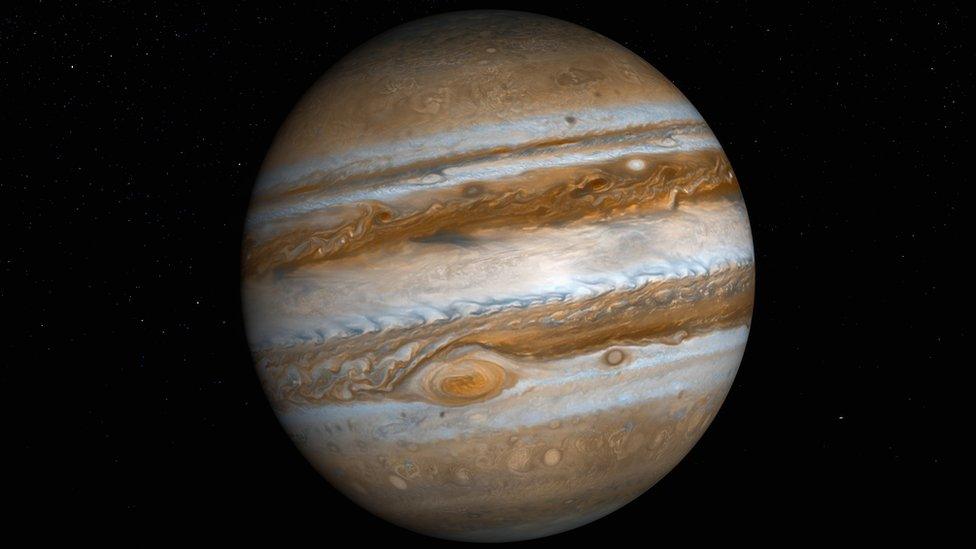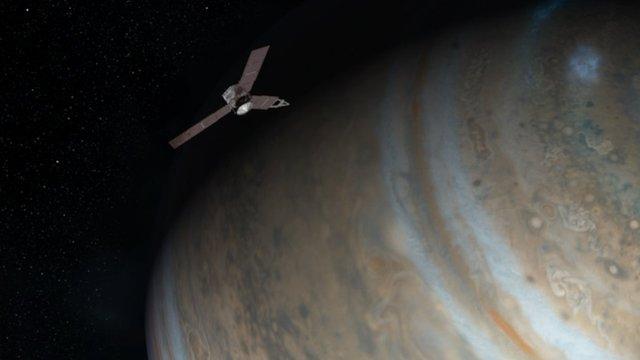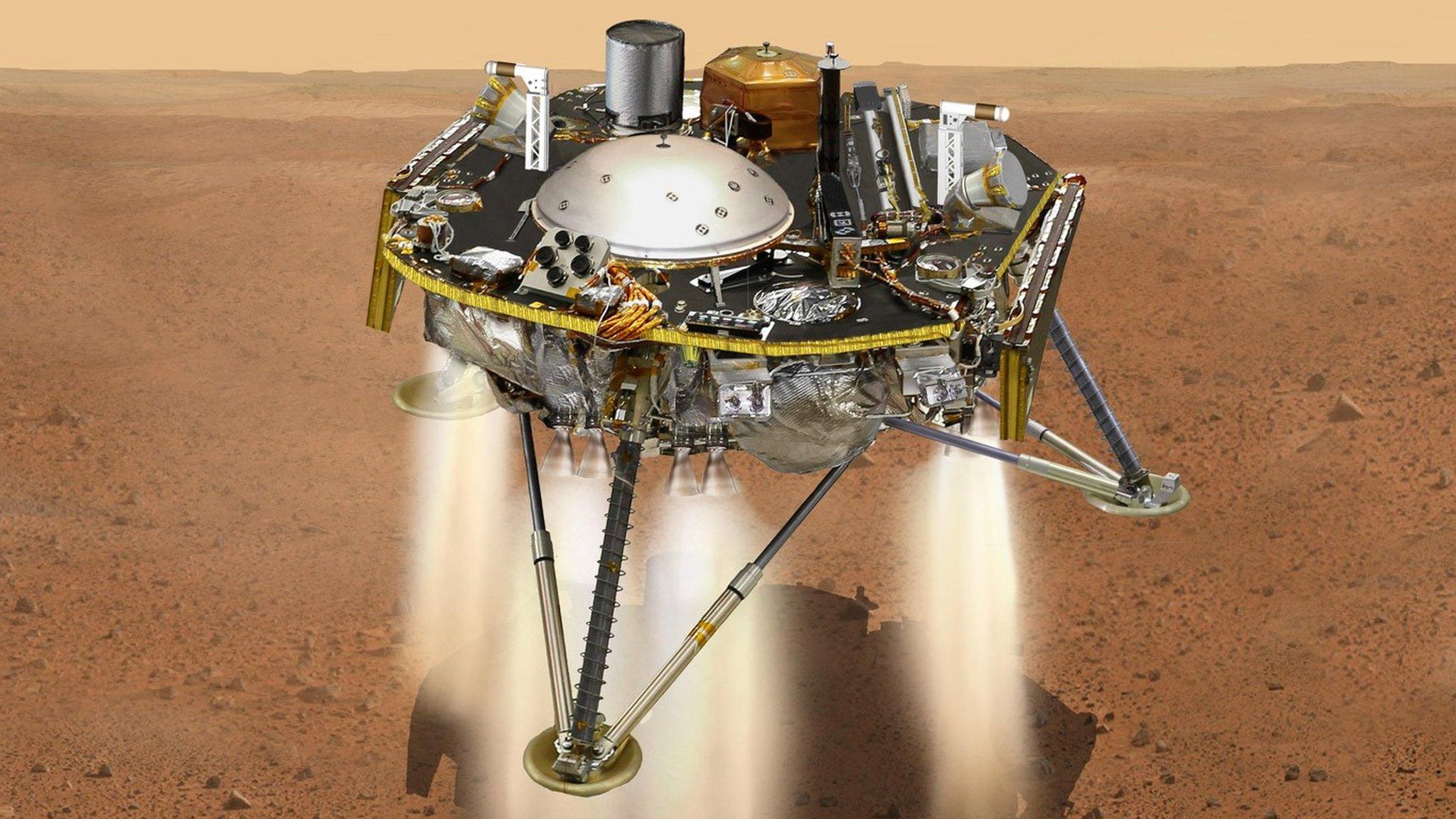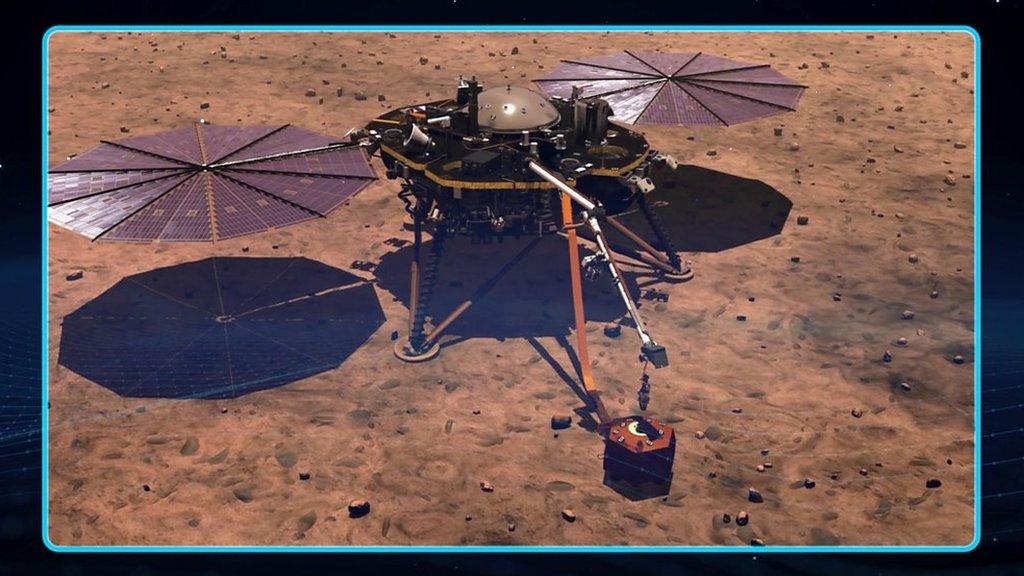Nasa extends Juno and InSight space missions
- Published
- comments

Here's a story that is out of this world!
Not one, but TWO of Nasa's missions - called Juno and InSight - are being extended.
An independent panel of experts reviewed both missions and found they "produced exceptional science" after increasing our understanding of the solar system and allowing scientists to ask even more new and exciting questions about what's going on up in space.
"But what are they?!" we hear you ask. We've got it covered below.
What has Juno discovered?
Juno will orbit the giant gas planet Jupiter
The Juno mission has made important discoveries about the interior structure of Jupiter and its magnetic field and magnetosphere - this is the space surrounding a planet which causes particles to be affected by the planet's magnetic field.
The team also found that Jupiter's atmospheric dynamics - which essentially means how the atmosphere works and causes weather patterns - are much more complex than scientists first thought.
The mission will continue to study Jupiter and will expand investigations to its rings and large moons. Observations and flybys are planned for Jupiter's moons Ganymede, Europa, and Io.
The Juno mission has been extended through to September 2025 or the end of the spacecraft's life.
What has InSight discovered?
WATCH: What will the Nasa InSight probe be doing on Mars? (2018)
The InSight spacecraft and team are using a highly sensitive seismometer to explore deep beneath the surface of Mars. A seismometer is an instrument that responds to movement in the ground caused by earthquakes, volcanic eruptions or explosions.
The mission has helped scientists learn about Mars in a way that has never been done before, by searching for and identifying 'Marsquakes' and gaining a greater understanding of the planet's crust and mantle.
InSight is also working to improve our scientific knowledge of Mars' atmospheric dynamics, magnetic field, and interior structure.
The extended mission will allow scientists to produce high-quality data about the rocky planet and discover more about how other planets like Mars may have formed!
The InSight mission has been extended for two years until December 2022.
- Published4 July 2016

- Published27 November 2018

- Published27 November 2018

